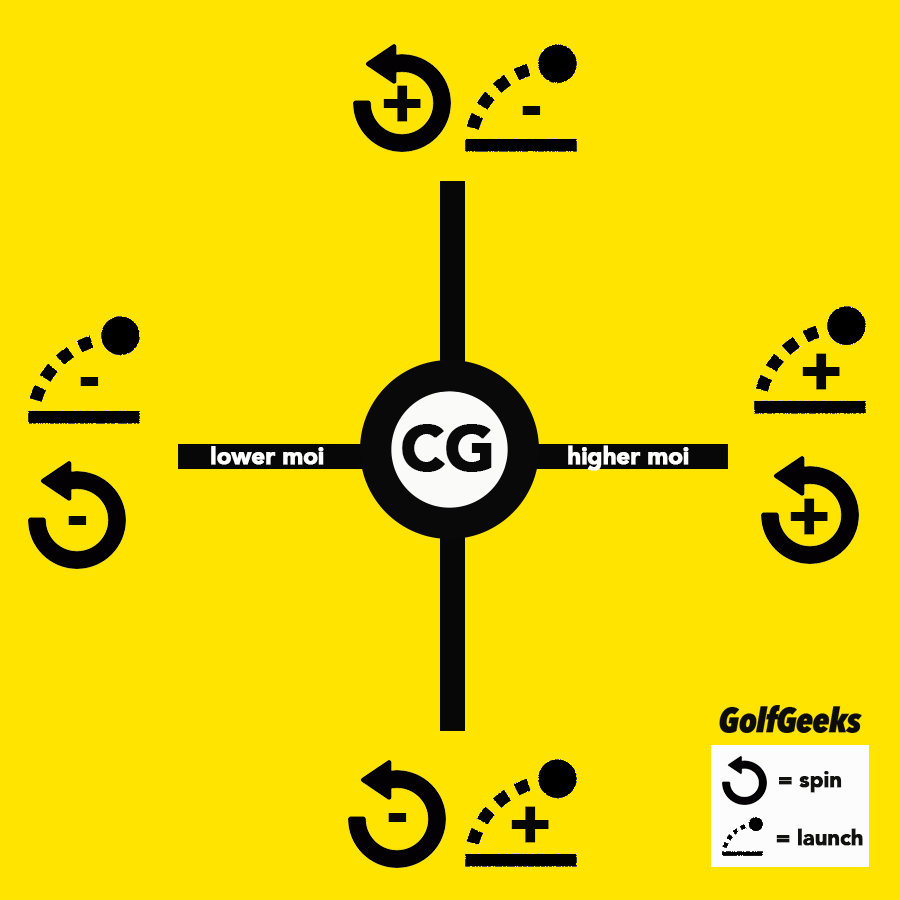Written By: Tony Covey
Yesterday we gave you a primer on driver Center of Gravity; what it is and why it matters. Whether you know it or not, CG location probably influenced your last driver purchase.
Today we’re going to take things a step further. We’re going to step away from the marketing, the buzzwords, and the catch phrases. We’re going to show you reality. We’re going to show you the actual center of gravity locations for 19 of most popular drivers of 2015.
Whose CG is the lowest? Whose CG is the farthest back? Whose CG locations are so high they’re nearly off the chart?
Does anyone actually offer low spin with forgiveness?
We have the answers.
Our first chart will provide you with a better understanding of relative CG between clubs. Our second chart is not to be missed. It pulls everything we’ve discussed the last two days together, and provides the best illustration of why the top drivers of 2015 perform the way they do.
The Fine Print
Before we get to our dynamic charts, it’s important to understand that although heads were measured according to USGA standards, tolerances (both in measurement and in manufacturing) come into play. The tolerance for our measurements is approximately .7mm. To account for this we represent CG using large dots rather than a smaller absolute point.
Where the dots are touching or in close proximity to one another, it’s reasonable to assume the heads offer similar performance.
These are CG measurements only. While CG placement is the foundation of driver performance, as you’re aware, loft and shaft selection also contribute to overall driver performance.
Finally, although we’ve blown these charts up to make them a bit easier to read, every last one of the CG locations represented is within that tiny little 14mm x 12mm box we discussed yesterday.
Here’s our graphic from our previous article to remind you how CG location impacts driver performance (left is front, right is back).
CG Location Relative to Face Center
This chart shows the CG locations of 19 different drivers relative to the center of the face.
To isolate a given head, simply select it from the list on the left hand side. You can select multiple drivers using the dropdown list. Individual models are color coded.
Movable weight/adjustable CG drivers have multiple dots associated with each head to reflect the CG location for the various weight positions. Hovering over a dot will reveal the driver model and weight configuration.
The x-axis represent distance in millimeters from the driver face (a value of -36, for example, represents a CG location 36mm from the face). Basically, the face would be to the right of the chart.
Observations
- Mizuno’s JPX-850 has the lowest CG of any driver sampled
- TaylorMade’s AeroBurner offers the most forward CG
- Callaway Big Bertha driver with gravity core up have the highest CG
- PING’s G30 has the most rearward CG location
- Among the adjustable CG drivers, it’s interesting to note which models offer the most significant CG movement
The Neutral Axis
Still with me? Let’s kick the geek speak up a notch.
As illustrated by the image above, the neutral axis is an imaginary line running perpendicular to the center of a lofted driver face. Before you can ask, let me tell you why that matters.
As the center of gravity moves closer to the neutral axis you get less gearing (twisting) and a more efficient transfer of energy. It’s your basic ball go far argument. As with everything else in our CG discussion, the distance from the CG to the neutral axis (or GG NA is it’s called for short) is measured in millimeters, but as we learned yesterday, those millimeters matter.
#Team_____ vs. #Team_____
As you would imagine, each golf company has its own unique CG philosophy. TaylorMade, for example, believes a low forward CG is best, while Ping is a strong proponent of rear (and also low) CG positions. Sometimes there’s a legitimate argument to be made for a given company’s philosophy, and sometimes – and this shouldn’t come as a shock – the publicly stated philosophy is developed to justify a technology that perhaps isn’t quite as compelling as we’re supposed to believe it is.
It’s also important that you understand that because of where reality dictates the CG has to be, and the front-heavy nature of a driver, it’s much easier to move the CG forward than it is to move it backwards. The farther you move CG backwards, the harder it is to keep it close to the neutral axis.
Simply put…low and forward is relatively easy to achieve. Low and back is hard, which is why you don’t see many true low/back designs.
Allowed 5 seconds of honesty and the suspension of the immutable laws of physics most R&D guys will tell you that the farthest point away from the face, and close or on the neutral axis is the ideal CG location. But like I said, putting it there is literally impossible.
So as a substitute for perfection, golf companies strive for the best we can do. Variations of the phrase low spin with forgiveness have been tossed around quite a bit this season. So keep that in the forefront of your mind as you consider the next chart.
A comparatively rear CG location near the neutral axis is the only way to truly achieve low spin with forgiveness.
CG Location Relative to the Neutral Axis (CG NA) & MOI
As with the first chart, you can sort our CG NA/MOI chart by club model. We’ve also added the ability to filter clubs by proximity to the neutral axis and MOI.
Please Note: Because MOI is represented by a positive number, the driver face would be to the left of the chart.
Observations
- In the previous chart we saw that the center of gravity for the majority of drivers is located below the center of the face, but none of the drivers measured has a CG on or below the neutral axis.
- With some weight positions less than 1mm from the neutral axis, Mizuno’s JPX-850 has the lowest CG of any driver measured, and likely the lowest CG of any driver on the mainstream market.
- The CG of Ping’s G30 is the farthest back of any tested, only Ping and Cobra offer drivers which can reasonably be described as offering low/back CG, and only Ping, Cobra, Titleist, Adams, and possibly Nike can be described as offering above average forgiveness.
- Ping’s G30 LS and Cobra’s FLY-Z+ achieve low(ish) spin with above average forgiveness.
- All of Nike’s current offerings can be considered high CG.
- Most manufacturers offer a sort of linear progression between models. In many cases you can connect (or nearly connect) all of a given manufacturer’s offerings with a single straight line. I would suggest that this is the best indicator of a given company’s CG philosophy relative to an entire product line
- The difference in CG location between FLY-Z+ weight forward and FLY-Z+ weight back, as well as Big Bertha Gravity Core Up vs. Gravity Core down is substantial, while CG movement between the various positions of the Mizuno JPX-850 is minimal.
Surprises
So, did anything here surprise you? Are there some manufacturers that aren’t exactly where they say they are? We think so.
I’d also be curious to know if you’ve observed something similar to what I have. Do you favor drivers with similar CG placements or are your preferences all over the map?
Want More from the Golf Geeks?
What other topics would you like to have our Golf Geeks tackle and simplify? Let us know.

















Sharkhark
8 years ago
This huge amount of insight & info is amazeaballs!